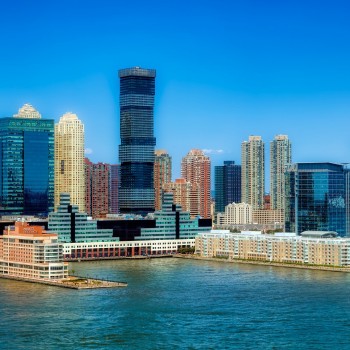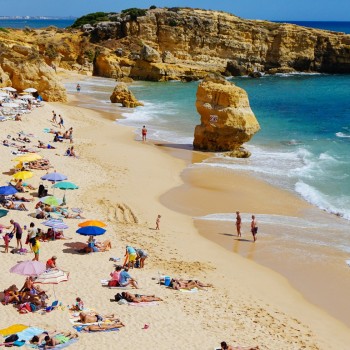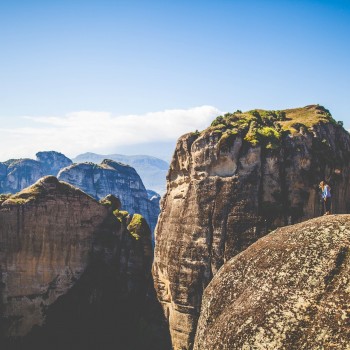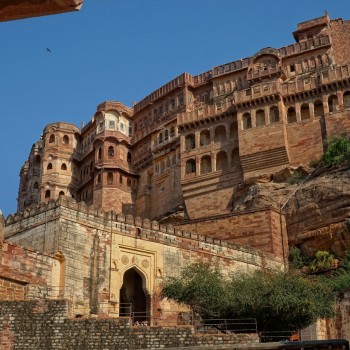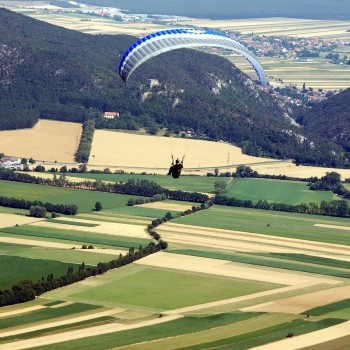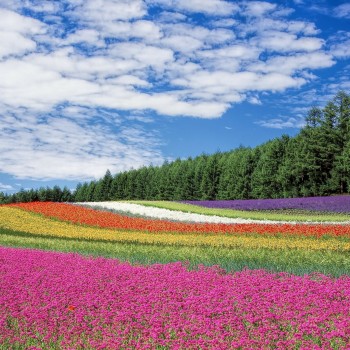Costa Rica
Costa Rica
Capital city description
San José is Costa Rica's most populous city and is the country's seat of the national government. The city is located in Costa Rica's western province in the Central Valley. San José covers a land area of 44.2 square km and had a population of 333,288 in 2015.
The average elevation of the city is 1,172 m. San José experiences a tropical wet and dry climate.
Climate
Climate :
Mid-December to April (dry season)
May and November ( rainy season)
Costa Rica has a tropical climate with two seasons: dry season and rainy (or “green,” as locals may call it) season. Due to varying elevations and environments, there are multiple microclimates around the country.
Languages spoken
Costa Rica's official and predominant language is Spanish.
The variety is spoken there; Costa Rican Spanish is a form of Central American Spanish. Costa Rica is a linguistically diverse country and home to at least five living local indigenous languages spoken by the descendants of pre-Columbian peoples: Maléku, Cabécar, Bribri, Guaymí, and Buglere.
Fun/Fascinating Facts
Unique Customs/Traditions
The romeria
It is a walk that begins before August 2, from any point of the country, towards the Basilica of the Angels, a Catholic church located in Carthage center.
However, most people start from the city of San Jose, the capital of Costa Rica.
The goal is to travel almost 22 kilometers before August 2 to reach the mass celebrated that day the Archbishop of the Diocese in the Basilica, in honor of the Virgin of the Angels, patroness of Costa Rica since 1824.
It is a multitudinous march that summons thousands of devotees who come to thank for the favors received. The most common penance is to go on your knees from the temple entrance to the altar.
The name of this religious festival is because the date of the discovery of the image coincides with the Franciscan celebration of Santa María de Los Ángeles.
Origin of the pilgrimage
This celebration originates in the legend of the appearance of the sculpture of a woman with a child in arms in a stone of about 20 centimeters of black color to be composed of an alloy of jade, graphite, and andesite.
According to the story, in 1635, an indigenous woman named Juana Pereira walked in a forest near the source of a spring in Puebla de Los Pardos, found the stone, and took her home.
The Lagarteada
La Lagarteada is another Costa Rican cultural expression. It consists of the capture of crocodiles during Good Friday and has a history that already exceeds 150 years.
In Ortega de Bolson Guanacaste, it occurred and was initiated by the farmers' need to protect their cattle from the crocodiles. Still, another reason was added: the belief that the reptile's fat has healing properties in cases of asthma and rheumatism.
The path followed by hunters or lizards is usually referred to as the banks of the river Tempisque. They are armed with sticks and nets.
When encountering the crocodiles' lairs or lizards, they start throwing water pumps to corner them or force them out. This work can take up to 6 hours.
When the animal is finally caught, it is tied up and taken to the center of the village. To announce it to all, the sirens of the cars begin to ring.
Already in the center, the crocodile is exhibited for one or three days, after which it is released near its burrow.
Even before it was done, the crocodile is not currently killed because it is an animal in danger of extinction. The Costa Rican Environment Ministry demands that it be returned to its cave three days after the capture.
Originally, only the experienced"lizards" were involved in hunting, but now many people from different parts of Costa Rica are engaged in the activity.
Farol Parade
It is a celebration in which elementary and high school students make lanterns to carry them in a parade with their parents along with San José on September 14.
This date is the eve of the celebration of the independence of Spain.
Another part of the tradition is the national chain that makes the president of the Republic, together with his government team at six in the afternoon of that day, sing the national anthem.
Popular universities
| Name | Description | |
|---|---|---|
| Universidad de Costa Rica (University of Costa Rica) | Established in 1940, Universidad de Costa Rica (University of Costa Rica) is a non-profit public higher education institution located in the urban setting of San José (population range of 1,000,000-5,000,000 inhabitants), San Jose. Officially recognized by the Ministerio de Educación Pública, Costa Rica (Ministry of Public Education of Costa Rica), Universidad de Costa Rica (UCR) is an extensive (uniRank enrollment range: 35,000-39,999 students) coeducational Costa Rican higher education institution. Universidad de Costa Rica (UCR) offers courses and programs leading to officially recognized higher education degrees such as bachelor's degrees in several areas of study. | |
| Universidad Nacional (National University, Costa Rica) | Universidad Nacional (National University, Costa Rica), founded in 1973, is a non-profit public higher education institution located in the urban setting of the small city of Heredia (population range of 50,000-249,999 inhabitants). Officially recognized by the Ministerio de Educación Pública, Costa Rica (Ministry of Public Education of Costa Rica), Universidad Nacional (UNA) is a large (uniRank enrollment range: 15,000-19,999 students) coeducational Costa Rican higher education institution. Universidad Nacional (UNA) offers courses and programs leading to officially recognized higher education degrees such as bachelor's degrees, master's degrees in several areas of study. | |
| Instituto Tecnológico de Costa Rica (Costa Rica Institute of Technology) | Instituto Tecnológico de Costa Rica (Costa Rica Institute of Technology), established in 1971, is a non-profit public higher education institution located in the urban setting of the small city of Cártago (population range of 50,000-249,999 inhabitants), Cartago. This institution also has branch campuses in the following locations: San Carlos, San José. Officially recognized by the Ministerio de Educación Pública, Costa Rica (Ministry of Public Education of Costa Rica), Instituto Tecnológico de Costa Rica (ITCR) is a medium-sized (uniRank enrollment range: 6,000-6,999 students) coeducational Costa Rican higher education institution. Instituto Tecnológico de Costa Rica (ITCR) offers courses and programs leading to officially recognized higher education degrees such as bachelor's degrees, master's degrees, doctorate degrees in several areas of study. | |
| Universidad EARTH (EARTH University) | Universidad EARTH (EARTH University), founded in 1990, is a non-profit private higher education institution located in the rural setting of the large town of Guacimo (population range of 10,000-49,999 inhabitants) Limon. This institution also has branch campuses in the following locations: Liberia, Guanacaste. Officially recognized by the Ministerio de Educación Pública, Costa Rica (Ministry of Public Education of Costa Rica), Universidad EARTH (EARTH) is a small (uniRank enrollment range: 250-499 students) coeducational Costa Rican higher education institution. Universidad EARTH (EARTH) offers courses and programs leading to officially recognized higher education degrees such as bachelor degrees in several areas of study | |
| INCAE Business School | Established in 1964, INCAE Business School, Costa Rica is a non-profit private higher education institution located in the suburban setting of the metropolis of Alajuela (population range of 1,000,000-5,000,000 inhabitants). This institution also has a branch campus in Managua. Officially recognized by the Ministerio de Educación Pública, Costa Rica (Ministry of Public Education of Costa Rica), INCAE Business School, Costa Rica (INCAE) is a very small (uniRank enrollment range: 250-499 students) coeducational Costa Rican higher education institution. INCAE Business School, Costa Rica (INCAE) offers courses and programs leading to officially recognized higher education degrees such as pre-bachelor degrees (i.e., certificates, diplomas, associate or foundation), bachelor degrees, master degrees in several areas of study. | |
| Universidad Latina de Costa Rica (Latin University of Costa Rica) | Established in 1989, Universidad Latina de Costa Rica (Latin University of Costa Rica) is a for-profit private higher education institution located in the urban setting of the large town of San Pedro (population range of 10,000-49,999 inhabitants), San Jose. This institution also has branch campuses in the following locations: Heredia, Santa Cruz, Pérez Zeledón, Grecia, Cañas. Officially recognized by the Ministerio de Educación Pública, Costa Rica (Ministry of Public Education of Costa Rica). Universidad Latina de Costa Rica (ULatina) is a large (uniRank enrollment range: 25,000-29,999 students) coeducational Costa Rican higher education institution. Universidad Latina de Costa Rica (ULatina) offers courses and programs leading to officially recognized higher education degrees such as pre-bachelor degrees (i.e., certificates, diplomas, associate or foundation), bachelor degrees, master degrees, doctorate degrees in several areas of study. | |
| Universidad Latinoamericana de Ciencia y Tecnología (Latin American University of Science and Technology) | Universidad Latinoamericana de Ciencia y Tecnología (Latin American University of Science and Technology), founded in 1987, is a for-profit private higher education institution located in the urban setting of the metropolis of San José (population range of 1,000,000-5,000,000 inhabitants), San Jose. Officially recognized by the Ministerio de Educación Pública, Costa Rica (Ministry of Public Education of Costa Rica), Universidad Latinoamericana de Ciencia y Tecnología (ULACIT) is a small (uniRank enrollment range: 4,000-4,999 students) coeducational Costa Rican higher education institution. Universidad Latinoamericana de Ciencia y Tecnología (ULACIT) offers courses and programs leading to officially recognized higher education degrees such as bachelor's degrees, master's degrees, doctorate degrees in several areas of study. | |
| Universidad Autónoma de Centro América (Autonomous University of Centro América) | Established in 1976, Universidad Autónoma de Centro América (Autonomous University of Centro América) is a non-profit private higher-education institution located in the urban setting of the large town of Cipreses de Curridabat (population range of 10,000-49,999 inhabitants), San Jose. This institution also has branch campuses in the following locations: Guápiles, Nicoya, San Ramón, Paso Canoas. Officially recognized by the Ministerio de Educación Pública, Costa Rica (Ministry of Public Education of Costa Rica), Universidad Autónoma de Centro América (UACA) is a small (uniRank enrollment range: 3,000-3,999 students) coeducational Costa Rican higher education institution formally affiliated with the Christian-Catholic religion. Universidad Autónoma de Centro América (UACA) offers courses and programs leading to officially recognized higher education degrees such as bachelor's degrees, master's degrees, doctorate degrees in several areas of study. | |
| Universidad de Iberoamérica (University of Ibero-America) | Founded in 1995, Universidad de Iberoamérica (University of Ibero-America) is a private higher education institution located in San José (population range of 1,000,000-5,000,000 inhabitants), San Jose. Officially recognized by the Ministerio de Educación Pública, Costa Rica (Ministry of Public Education of Costa Rica), Universidad de Iberoamérica (UNIBE) is a coeducational Costa Rican higher education institution. Universidad de Iberoamérica (UNIBE) offers courses and programs leading to officially recognized higher education degrees such as bachelor's degrees, master's degrees, doctorate degrees in several areas of study. | |
| Universidad Veritas (Veritas University) | Established in 1976, Universidad Veritas (Veritas University) is a private higher education institution located in the urban setting of San José (population range of 1,000,000-5,000,000 inhabitants), San Jose. Officially recognized by the Ministerio de Educación Pública, Costa Rica (Ministry of Public Education of Costa Rica), Universidad Veritas (UVERITAS) is a very small (uniRank enrollment range: 1,000-1,999 students) coeducational Costa Rican higher education institution. Universidad Veritas (UVERITAS) offers courses and programs leading to officially recognized higher education degrees such as bachelor's degrees, master's degrees in several areas of study. | |
Festivals & Events

Saint Days of Santa Cruz (Fiestas de Santa Cruz)
Date: January 15th
Saint Days of Santa Cruz (Fiestas de Santa Cruz is a religious celebration for the patron saint of Santa Cruz, “Santo Cristo de Esquipulas.” The primary day of the celebration is January 15th; within Santa Cruz town, you can find two central locations for the festivities.
The Plaza de Los Mangos, where bloodless bull riding takes place, and the Parque Bernabela Ramos, where the other cultural activities can be found.

Envision Festival
Date: February
Featuring live concerts, yoga, trapeze, and lots of communing on the beach, Envision Music, Art, and Sacred Movement Festival usually occur during February.
This festival is perfect for conscious people from around the globe.

Fiestas de los Diablitos:
Date: February
Fiestas de Los Diablito’ means ‘Festival of the Little Devils.’ This festival took place in December and in the second half of February, respectively, and was held in two indigenous communities, Boruca and Rey Cuure. People who join the festival don masks and wear costumes representing ancestral spirits and then represent a battle between the diablitos (Boruca Indians) and the toro (Spanish troops) via dancing.
They also drink chicha, a fermented corn beverage, out of hollow gourds. This scene is completed with the fireworks and food in Rey Curre south of San Isidro de El General.

Fiestas Palmares
Date: January
This festival is the biggest cowboy party in the country. Usually, this event lasts for two whole weeks, and it takes place in January. It is a mass event with horse parades, carnivals rides, rodeos, musical performances, and a seemingly infinite supply of beer. About a million people join this street festival from every corner of the country. A significant component of this event is a lavishly organized horseback riding parade. This festival has assumed national importance.
This festival also includes a Toros a la Tica, a Costa Rican-type bullfighting that doesn’t create much bloodshed and violence. Instead, it is more comical. It is said that this event is a pickpocket’s dream, so it is recommended to take care of your wallet and keep it in a safe place.
.jpg)
Límon Carnival
Date: October
In Costa Rica, possibly October is the most colorful and festive month. In this month, people start preparing to head to Puerto Limon (adjacent to the Caribbean coast of Costa Rica) to celebrate the annual carnival. The events comprise of carnival queen election, dance, food, and parade and cover 2 weekends.
During this festival, the multicultural province of Limon bustles with activities. The costumes and floats that parade through the town seem to grow more elaborate and represent the area's culture.
.jpg)
Semana Santa or Easter
Date: April
This festival starts on Thursday and ends on Sunday. Costa Rican regards a religious event or festival in high esteem and celebrates as a party. Semana Santa or Easter-the Holy Week, celebrating the demise and resurrection of Christ is celebrated by the people of the country.
Though the processions are held in each city by Catholic churches, the procession in San Jose city is the main attraction since the cast of the National Theatre Company participates in it. This company features various bands and professional musicians. People who do not take part in the religious celebrations can spend some leisure time in the beach area.

Virgin of The Sea Day (Fiesta del Virgen del Mar)
Date: July 16th
On July 16th the Virgin of Mt. Carmel is the parade on the coastline with decorated fishing boats, to honor the Puntarenas patron saint.
Music, dance, masses, food, fireworks, and sporting activities take place during the celebration.
Attractions / Top Sights

Manuel Antonio National Park
When to visit: February
Manuel Antonio Park and the surrounding area are known for beautiful beaches, lush forests, and diverse wildlife that inhabits the area.
As soon as you venture into the park, you will have no trouble finding iridescent butterflies and colorful birds flitting about. Howler monkeys, squirrel monkeys, sloths, and the hard-to-miss capuchins can be seen from the trails. For a more in-depth experience consider joining a Manuel Antonio Park Nature Guided Tour. Guides often know exactly where the animals are and carry tripods and telescopes, ideal for viewing and photography.
Most of the action in town is centered around the beautiful oceanfront beach, where noon-time soccer matches break out, and surfers enjoy the usually gentle waves. (This is a popular place for beginners to take surf lessons.)
Across the road from the beach and higher up on the hillside are restaurants and stores, some of which can get loud in the evenings. For those who want to escape from the activity of the main beach, equally attractive beaches are inside the park.

Monteverde and the Cloud Forests
When to visit: December through April

Tortuguero National Park
When to visit: July to october
Visitors may want to head to Tortuguero National Park on the Caribbean Coast for something a little different and a little off the beaten path. This area, accessible only by boat or plane, is one of the wettest areas in the country and offers something different than the rest of Costa Rica. The park is an important breeding ground for the green sea turtle, and as a result, turtle watching is the main activity here.
While there are many beaches, the coastal area is unsuitable for swimming as the surf and currents are rough and strong. Sharks are common. Hundreds and even thousands of green and leatherback turtles can be viewed (guides are necessary) nesting and laying eggs on the beaches overnight. Recent conservation efforts have increased the number of turtles nesting in the area.
From the hiking trails or boat rides along the canals, it's possible to spot monkeys, sloths, and kinkajous. Peccaries and tapirs are also present but more difficult to see. Freshwater turtles, lizards, snakes, frogs, toads, and other amphibians are also common.

The National Theater in San Jose
When to visit: July and August ( Thursday)
Costa Ricans take pride in the National Theater, which is considered the most impressive building in San José. In the 1890s, the ruling coffee barons voted for a tax on coffee exports to fund the theater's construction, and European artisans were imported to design the building.
In 1897, the building featured a classical Renaissance columned façade topped by statues symbolizing Dance, Music, and Fame. Inside, the pink marble foyer features allegorical figures of Comedy and Tragedy, and painted murals depicting themes in Costa Rican life.
The most famous of the paintings is coffee harvesting and export painted by Arturo Fontana in Milan in 1897.

La Paz Waterfall Gardens
When to visit: During the dry season from the end of December until late April
This privately owned nature park is a must-see attraction in Costa Rica. Spread out over 70 acres, the park is home to various wildlife, including monkeys, butterflies, hummingbirds, and others.
The highlight of the park is the La Paz waterfall. Rainwater from the cloud forests tumbles off a high ledge, dropping 37 meters into a pool below. In addition to the waterfall, your admission ticket includes access to the serpentarium, butterfly observatory, jungle cat exhibit, and ranarium (frog exhibit).
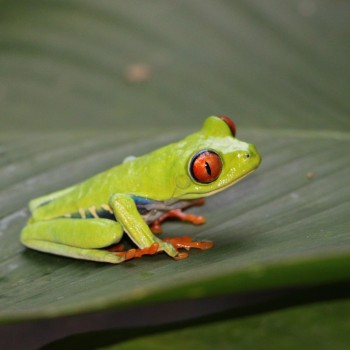
Sarapiquí
When to visit: December 3rd to April 15th
Costa Rica is known for its rich biodiversity, lush rainforests, and outdoor adventures. You’ll find all of that in Sarapiquí. With Chilamate Rainforest Eco-Retreat, a family-run eco-lodge located in a nature reserve near the Sarapiquí River, as your home base, you can wake to the call of howler monkeys, birdwatch from the breakfast table (macaws and toucans frequently fly by here), raft the rapids, take a chocolate tour, or even learn to dance salsa and cook Costa Rican cuisine from a local. In the evening, trek into the forest with a naturalist guide to spot nocturnal creatures like the iconic red-eyed tree frog.
If you’re coming from Juan Santamaría International Airport in San José, make a stop at Mi Cafecito for a local coffee experience en route.

Arenal
When to visit: November to April
The Arenal area attracts a large number of visitors for a good reason: in addition to healing thermal hot springs and views of the perfectly conical volcano, options for hiking, adventure, and wellness are endless. Soar through the treetops along a zipline and rappel down waterfalls in the Lost Canyon. Search for wildlife, including sloths and snakes, on a guided tour across the hanging bridges.
Stay at Rancho Margot sustainable farm for a chance to connect with the land, take a tortilla-making class, and get to know local chef Doña Maria in her own kitchen (can be arranged through GreenSpot Travel), or take some time to tune into your inner world with a yoga and meditation retreat at Living Forest on Lake Arenal.

Jaco Beach
When to visit: Late December till early April
In the province of Puntarenas in Costa Rica, Jaco can best be described as a town of contrasts. It has developed into a favorite for foreign and local tourists through the years, from surfers lured by its waves to partygoers attracted to its bars and nightclubs to families looking for a convenient getaway.
As you walk down the main street in the seaside town, parallel to the ocean, the contrasts continue. Cuisine ranges from fine dining options to fish taco stands. Visitors could be affluent golf enthusiasts or surfers seeking out budget-friendly options.

